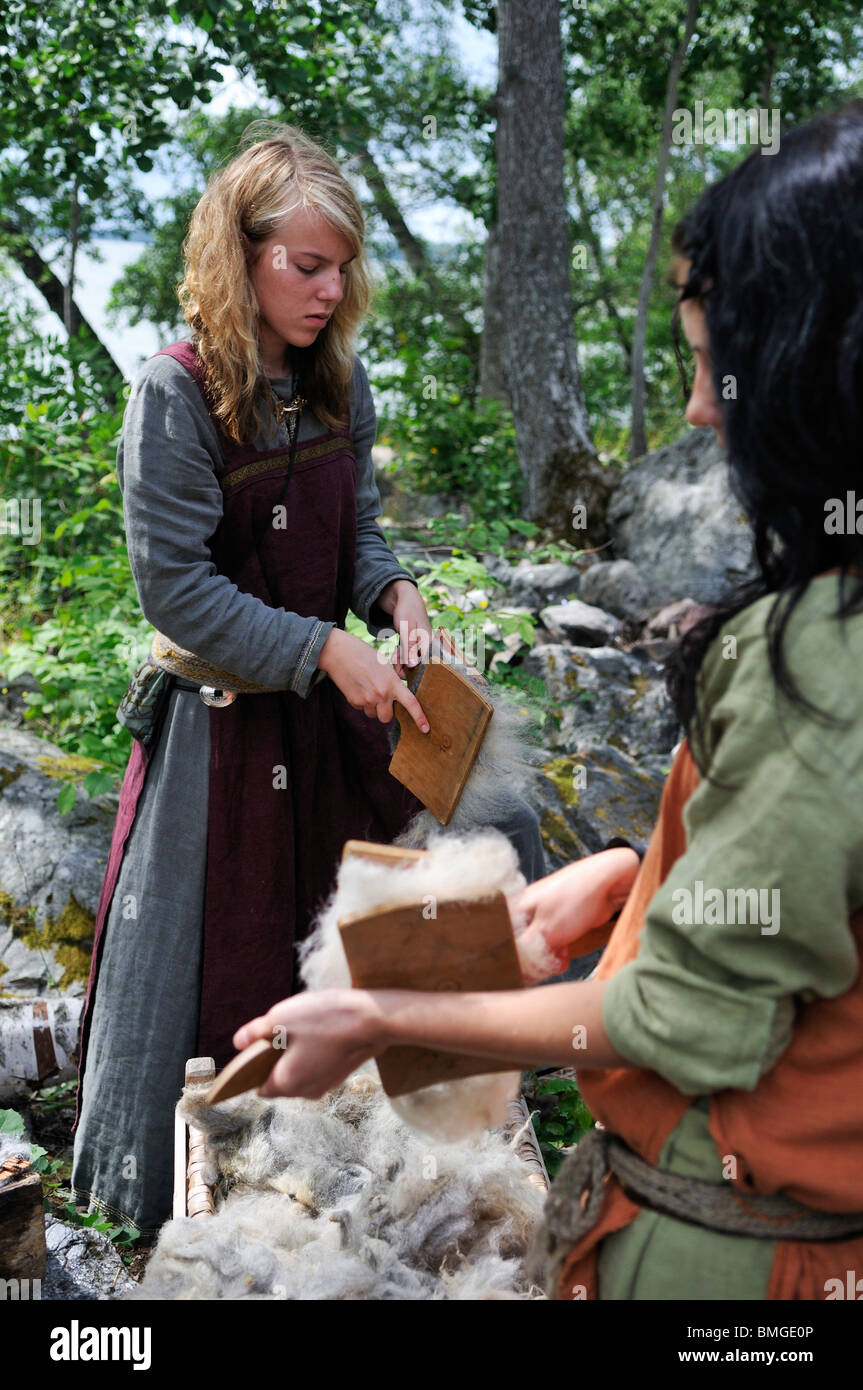
In the Viking and medieval eras, women were the basis of the North Atlantic economy, and their cloth allowed people to survive the climate of the North Atlantic. Textiles and what women made were as critical as hunting, building houses and power struggles,” she says. Textiles trivial? In my Zoom interview with her, Hayeur Smith, blond hair spilling to her waist, calling to mind a Valkyrie, speaks in a voice ringing with conviction: “No. Her resulting studies of that museum's neglected collection of little brown scraps, as well as many other specimens of ancient Viking and later North Atlantic fabric, are among the first to prove the old guard wrong about the importance of cloth and women in ancient societies. She has pored over thousands of soil-encrusted fragments dense with information about the women who made the fabric. Inspired by her first glimpse of the wealth of textile remnants in the museum's storeroom, Hayeur Smith eventually decided to uncover the lives of the ordinary women who stood weaving at their looms.Įver since then, she has been analyzing textiles spanning 900 years of history, starting with the Viking settlement of Iceland in C.E. student at the University of Glasgow, she'd devoted herself to studying Viking women's dress and ornament, typically from artifacts found in burial sites.

She knew that the way people in the past clothed themselves and wove everything from currency to cloaks could reveal a great deal about a lost culture, especially its women. In her 20s Hayeur Smith earned a fashion degree in Paris. Hayeur Smith grew up surrounded by fabrics her anthropologist mother collected from around the world. Yet they were just sitting there, hardly examined by anyone. “It was literally thousands of fragments,” she says.

She first visited in 2009 to inspect the museum's collection of remains from the Viking Age and later periods. Hayeur Smith's study of early North Atlantic textiles took off from the basement storage area of the National Museum of Iceland, its rows of metal shelving bursting with boxes and bags of dirt-covered cloth.

Her work has shown that the Vikings never would have expanded their known world without the women's work of weaving. Michèle Hayeur Smith, an anthropological archaeologist at Brown University, has been at the forefront of efforts to glean insights from ancient cloth, scouring archaeological sites and museum collections for textiles that could illuminate the lives of women in early North Atlantic societies. But even in a fragmentary state, it contains a wealth of information about the people who made and used it. Cloth rarely survives the centuries because it decomposes easily except under ideal preservation conditions.

In recent years archaeologists have sought to fill that gap in our knowledge, in part by taking a closer look at traditionally ignored remains such as textiles, which had long been dismissed as trivial. As a result, our understanding of past cultures is woefully incomplete. Another reason is that early archaeologists were mostly men and more interested in men's work than in women's. One is that the kinds of artifacts that tend to be preserved well are made of inorganic materials such as stone or metal, and many are associated with behaviors stereotypically linked to men, such as hunting. There are a couple of reasons for this bias. For most of the time that scholars have been probing the human past, they have focused mainly on the activities of men to the exclusion of women. Archaeology has a representation problem.


 0 kommentar(er)
0 kommentar(er)
